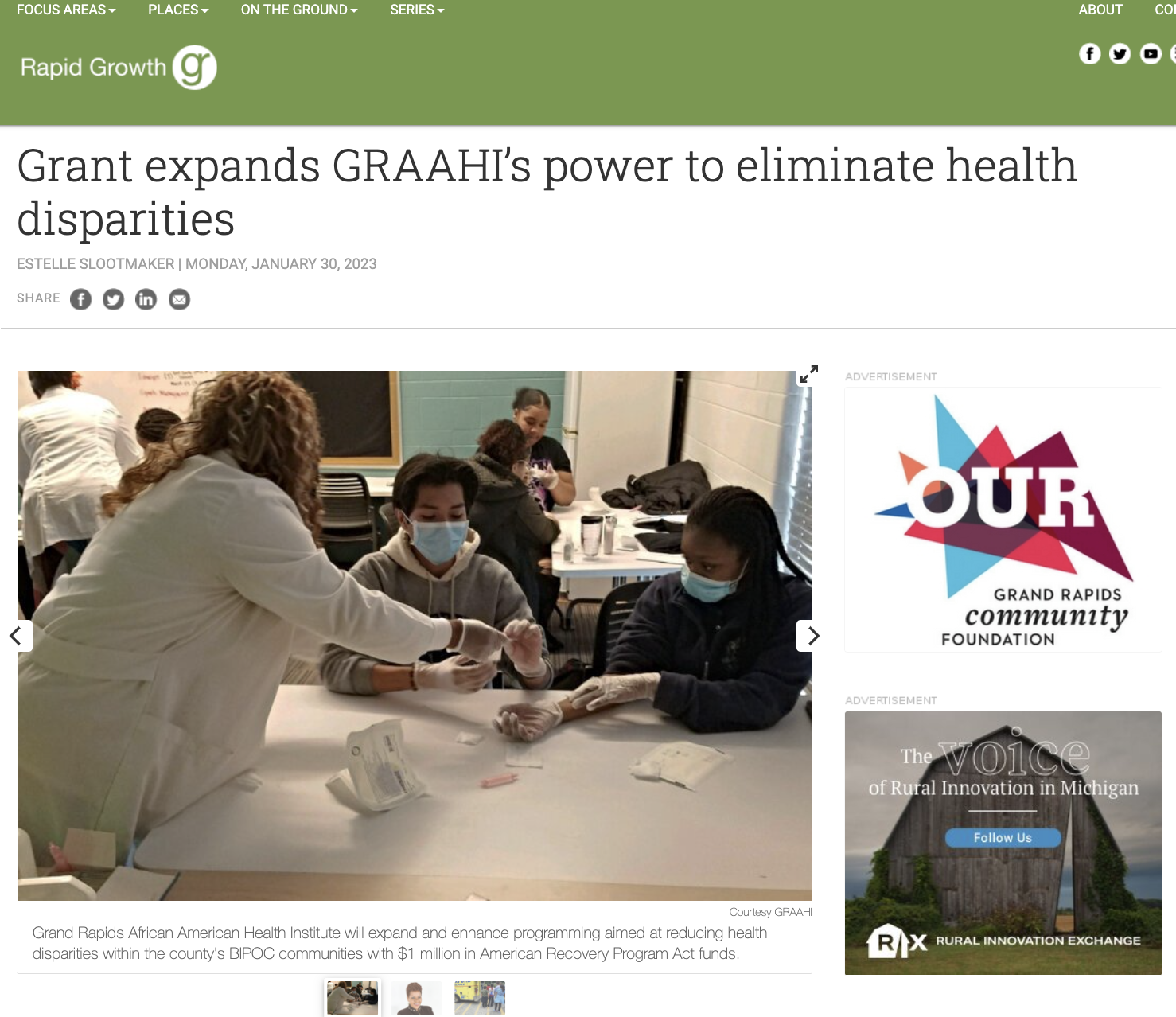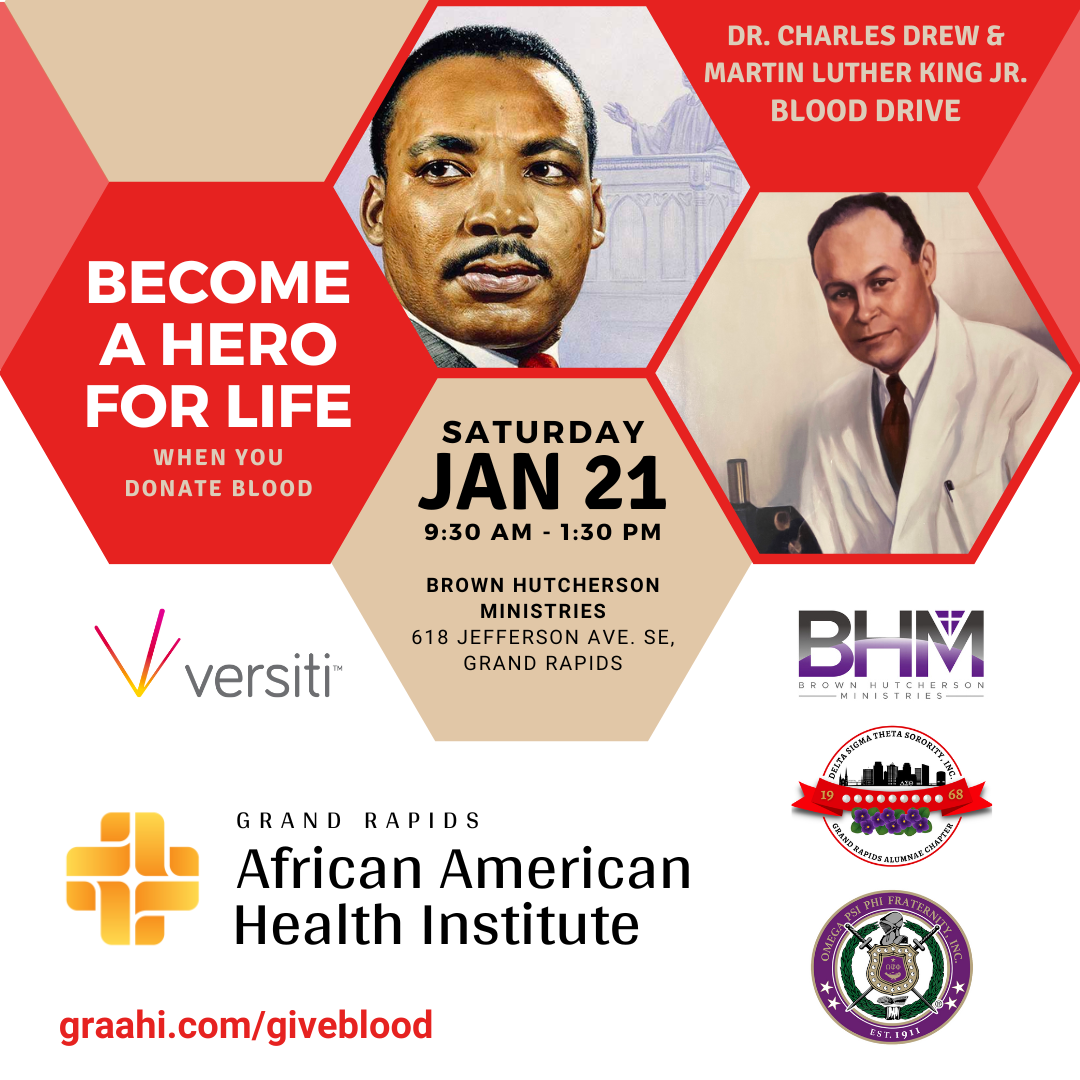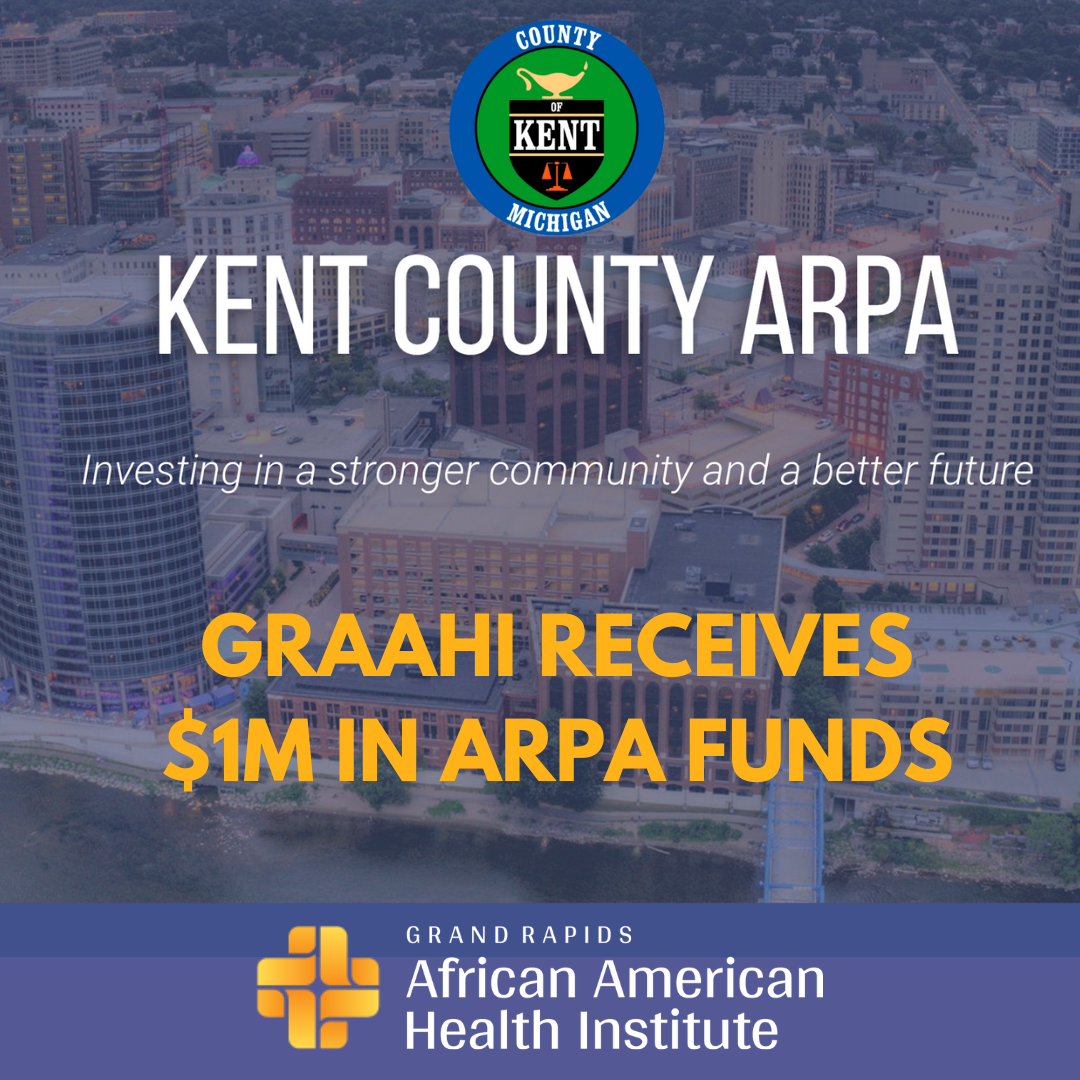ESTELLE SLOOTMAKER | MONDAY, JANUARY 30, 2023
Thanks to a $1 million American Rescue Plan Act (ARPA) grant awarded by Kent County, the Grand Rapids African American Health Institute (GRAAHI) will expand and enhance programming aimed at reducing health disparities within the county’s BIPOC communities. Founded in 2002 in reaction to a Kent County Health Department community needs assessment, the grassroots organization has leveraged community input and collaborations with other organizations to address disturbing racial disparities in maternal and infant mortality, diabetes, access to mental and medical health care and more.
“That survey showed daunting, glaring disparities — more than the community had anticipated,” says Vanessa Greene, GRAAHI CEO. “Disparities are not just a result of treatment experiences. Eighty percent of health disparities are a result of social determinants — where people live, which determines where they go to school, and then that determines their ability to access resources and higher education, which then informs what type of job they’re going to get. The type of employment determines what type of health insurance that they have.”
Some of the grant money will help fund GRAAHI’s health navigator programs, which focus on maternal infant health and mental health. GRAAHI’s mental health navigators aim to connect at least 500 African Americans with mental health services to address needs exacerbated by the COVID-19 pandemic. Navigators working with expectant mothers aim to reduce BIPOC maternal and infant mortality and morbidity. A 2020 Kent County Community Needs Assessment found that nearly twice as many Black babies here died in their first year of life than white babies (8.1 per 1,000 compared to 4.5 per 1,000 live births). Similar disparities exist across the U.S. Research has determined that racism-induced stress is a major root cause.
“We still have mothers who are not highly engaged in prenatal care, who don’t have the comfort level [with their provider],” Greene says. “Community health navigators help them through that process and walk alongside them. We want to be really intentional about supporting pregnant women and making sure that they understand every stage of their pregnancy and have the resources to help them navigate that process.”
The grant will also expand GRAAHI’s Pathways to Healthcare Careers program, which seeks to increase underrepresented students in health care professions.
Launched in Grand Rapids Public Schools in fall 2022 at Stocking Elementary and UPrep Middle and High Schools, Pathways connects educators, healthcare professionals, academic tutors and mentors with students during after-school sessions. Additional Pathways pilot programs are being developed with Grand Rapids Community College, Davenport University, Ferris State University, Michigan State University and Grand Valley State University as well as with three Grand Rapids area hospitals — Spectrum Health Butterworth, Trinity Health Saint Mary’s and University of Michigan Health-West.
“When people come in, it’s important for them to see faces that look like them,” Greene says. “Having increasing diversity in the health care sector is important for [those working in health care to understand] how cultural relevance and affirming treatment impacts the overall attitude and trust level of the patient. The other factor, COVID, created a lot of shifts in terms of people leaving the health care system. There’s a shortage in almost every [health care] field.”
GRAAHI also plans on expanding its Restoring Health program that serves Kent County’s older adults who were adversely impacted by COVID-19 and now face deteriorating health due to chronic conditions, poor nutrition, lack of physical activity, or social isolation. In addition, GRAAHI plans to enlist more than 100 repeat blood donors to help sickle cell patients survive that disease, which is prominent within the Black community.
“We’re nowhere close to achieving all of our goals, but we are really excited about the strides that we’re making and the systems that we have in place,” Greene concludes. “We do anticipate seeing even greater results and impact with this funding we’re receiving from the county.”
Written by Estelle Slootmaker, Development News Editor
Photos courtesy GRAAHI
Article is copied from Rapid Growth Media – https://www.rapidgrowthmedia.com/devnews/0130graahi.aspx











